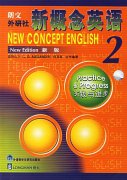牛津实用英语语法:334 不定式表示目的
编辑:高中作文网表示目的时可以使用下列各种方法:
A 单独的不定式:
He went to France to learn French.
他去法国学习法语。
They stopped to ask the way.
他们停下来问路。
当主要动词之后有一个间接宾语时,不定式可能指这个间接宾语而不是指主语:
He sent Tom to the shop to buy bread
他派汤姆到店里去买面包。(该由汤姆而不该由主语“他”去买面包。)
B in order/so as+不定式
in order+不定式意指主语想要做这一动作,或主语很希望这一动作发生。
so as+不定式仅指主语很希望某一动作发生。因此in order +不定式比so as+不定式更为普遍。
in order或so as也常用于以下情况:
1 与否定不定式连用,表示否定性的目的:
He left his gun outside in order/so as not to frighten us.
为了不使我们受到惊吓,他把枪放在了外面。
2 与to be和to have连用:
She left work early in order/so as to be at home when he arrived.
为了在家等他到达,她提前下了班。
She gave up work in order/so as to have more time with the children.
为了能有更多的时间和孩子们相处,她放弃了工作。
3 表示不是近期能实现的目的:
He is studying mathematics in order/so as to qualify for a better job.
他学习数学是为了能有资格做更好的工作。
She learnt typing in order to help her husband with his work.
她学习打字是为了帮助她丈夫工作。
4 有时在较长的句子中,用于强调不定式表示目的:
He was accused of misrepresenting the facts in order/so as to make the scheme seem feasible.
人们指责他为了使计划显得可行而没有如实地把真相说出来。
He took much more trouble over the figures than he usually did in order/so as to show his new boss what a careful worker he was.
为了向新老板显示他是工作非常细心的人,他在这些数字上费了比往常更多的力气。
(但是in order/so as并非必要,有时是可省略的。)
表示目的的不定式位于主要动词之前时,in order/so as可位于句首:
In order/So as to show his boss what a careful worker he was,he took ex- tra trouble over the figures.
为了向新老板显示他是个工作非常细心的人,他在这些数字上费了比平常更多的力气。(但这里的in order/so as也可以省略。)
5 句中有一个间接宾语而要想让不定式毫不含混地指主语时,可用so as/in order:
He sent his sons to a boarding school in order/so as to have some peace.
为了图清静,他把他的儿子们送进了寄宿学校。(这里是指他要清静,而不是他的儿子们。)
比较:
He sent his sons to a boarding school to learn to live in a community.
为了让儿子们学会在集体中生活,他把儿子们送进了寄宿学校。(是让他的儿子们学会在集体中生活,而不是他。)
但是in order/so as的这种用法不是很普遍,更常说:
He sent his sons to a boarding school because he wanted to have some peace.
他把儿子们送进寄宿学校,因为他想清静点儿。
C in order(不包括so as)可用于强调不定式所表示的是主语脑子里真正想要达到的目的:
—He bought diamonds when he was in Amsterdam!
—That wasn’t surprising.He went to Amsterdam in order to buy dia- monds.
—他在阿姆斯特丹时竟买了一些钻石!
—这并不奇怪,他就是为了买钻石才去阿姆斯特丹的。(不是为了其他目的。)
另外也可用重读第一个动词而省略in order的方法来表示同样的意思:
He'went to Amsterdam to buy diamonds.
他去阿姆斯特丹就是为了买钻石。
D 不定式+名词+介词:
I want a case to keep my records in.
我想要一个盒子来保存我的唱片。
I need a corkscrew to open this bottle with.
我需要一个螺丝刀来打开瓶塞。
注意:这里谈论的是特指的目的。
关于泛指的目的可用for+动名词结构来表示:
This is a case for keeping records in.
这是用来保存唱片的盒子。
A corkscrew is a tool for opening bottles.
螺丝刀是用来开启瓶塞的工具。








